Horror movies are always more effective when reminiscent of, or straight up depicting, real world fears. What better way to terrify the masses than by visually portraying urban legends, some of the most widespread of superstitions and irrational paranoias? Many of these folk horror films are tackled by smaller directors looking to kickstart, though some bigger budget gems have been known to shine through.
Triangle 2009
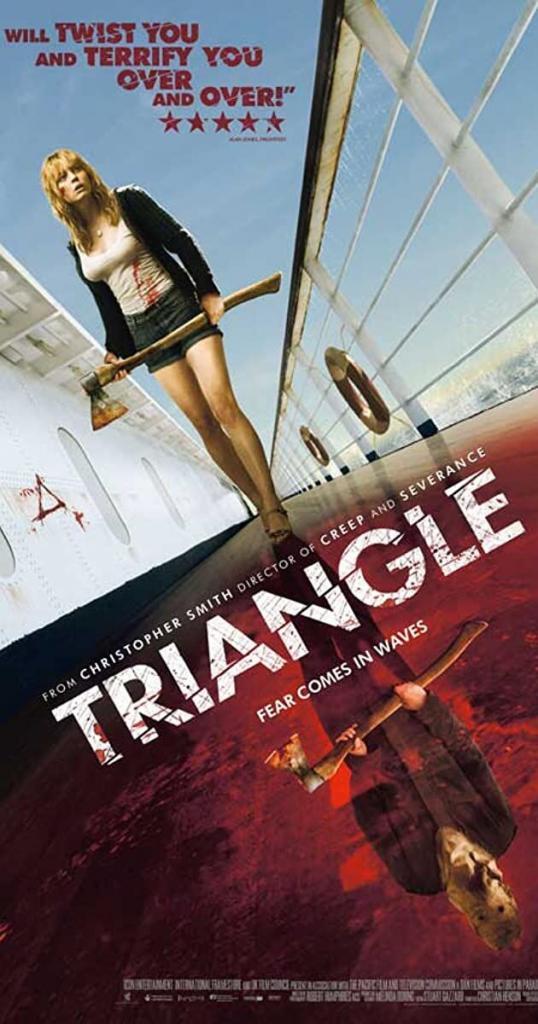
Triangle is a twisting, turning, chilling British horror/thriller from Christopher Smith, director of Severance (2006) and Black Death (2010). A potent hybrid of old school slasher à la Friday 13th (1980) and mind-bending science fiction in the vein of Predestination (2014) and Coherence (2013), this unsettling nautical romp is certain to please fans of both. When Jess, a single mother, embarks on a boating trip with her friends, a storm forces them to abandon their vessel for a seemingly deserted cruise liner. Once aboard, the group are faced with a deranged killer, along with waves of psychological mayhem and headache-inducing time loops.
As the name may suggest, Triangle is centred around the infamous Bermuda Triangle, a region in the western part of the North Atlantic Ocean. The region is said to have played setting to, and been the culprit of, a great number of obscure sightings and disappearances leading back to 1492. It was then that Christopher Columbus and the crew of the Santa Maria sailed through the triangle to arrive at Guanahani, though not before reportedly seeing a strange and unknown light in the sea fog. Since then a great deal of boats and aeroplanes have disappeared in the sinister sea-region, from the USS Wasp in 1814 to Turkish Airlines flight TK183 in 2017, some carrying upwards of a hundred passengers at the time of disappearance.
Triangle does great justice to the eerie and unexplainable legend of the Bermuda Triangle, it’s warping story leaving viewers guessing and re-guessing until its bleak and poignant closing scene. Weight is added through Smith’s use of bloody violence and tense horror, creating a soft hybrid of a film which remains as entertaining and thought provoking now as it ever was.
Bermuda is not the only area that has a mysterious triangle. The Alaska Triangle has similar tales albeit over land.
The Blair Witch Project 1999
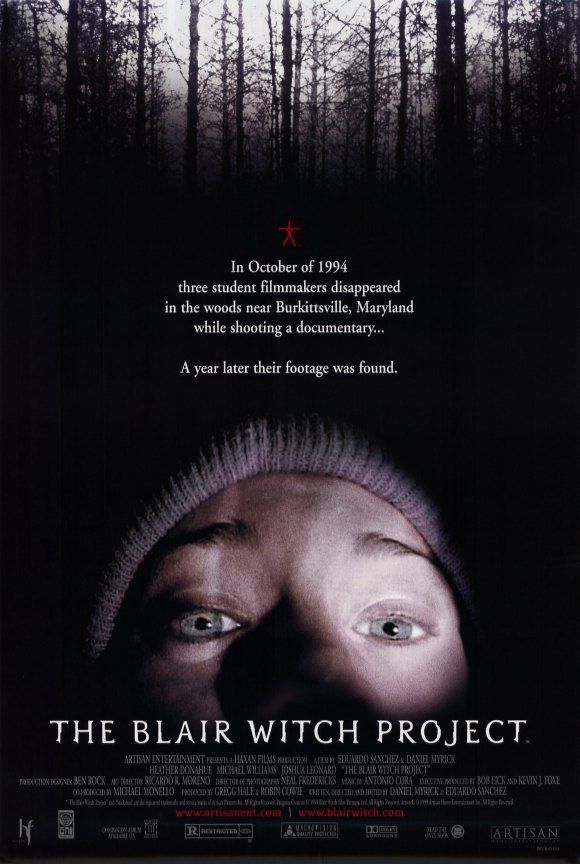
This pioneer of the found-footage subgenre shocked audiences in 1999 with a claustrophobic and wholly believable portrayal of young adults falling victim to the legend of the mysterious Blair Witch. After setting off into rural Maryland to document and hopefully capture some evidence of the insidious figure, including interviewing locals and camping in some questionable spots, Heather Donahue, Joshua Leonard and Michael C. Williams (playing themselves) soon become lost in the vast wilderness. Seemingly stalked and tormented by the very myth they sought to invoke, the three encounter dread and distress enough to make any viewer think twice about their next camping trip.
Of course, the legend of the Blair Witch is just that, a legend. That being said, it had more of an interesting start than most. Writer-directors Daniel Myrick and Eduardo Sánchez fabricated an entire urban legend regarding the town of Burkittsville, Maryland, plastering missing-person posters around the 1999 Sundance Film Festival and claiming their footage was real. Sundance legally had to confirm the film as a work of fiction, though this did not lessen the impact the marketing ploy had. The rise of a $60,000 indie flick to $248,000,000 blockbuster is staggering, as is the influence the film has had on the horror scene long after its release.
The Blair Witch Project relied on a strong cast utilising a lot of improvisation to help its desired effect come to life. Not just for the claims of authenticity (though it did help those) but for the raw and genuine atmosphere running through the flick. The actors camped for ten days in the Maryland wilderness while cremembers posed as their antagonist, leaving stick figures and bloody packages at camp, shaking their tents in the early hours. Only Heather, of the three, was given any information about the witch to ensure the others gave authentic reactions and asked plenty of questions.
While this type of filmmaking can come with complications, such as the actors’ parents being sent sympathy cards over their children’s fictional deaths to this day, it shows a complete commitment from cast and crew. To make something with this impact, small sacrifices must sometimes be made, though we’ll leave it up to the creators to decide whether it was worth it.
Willow Creek 2013
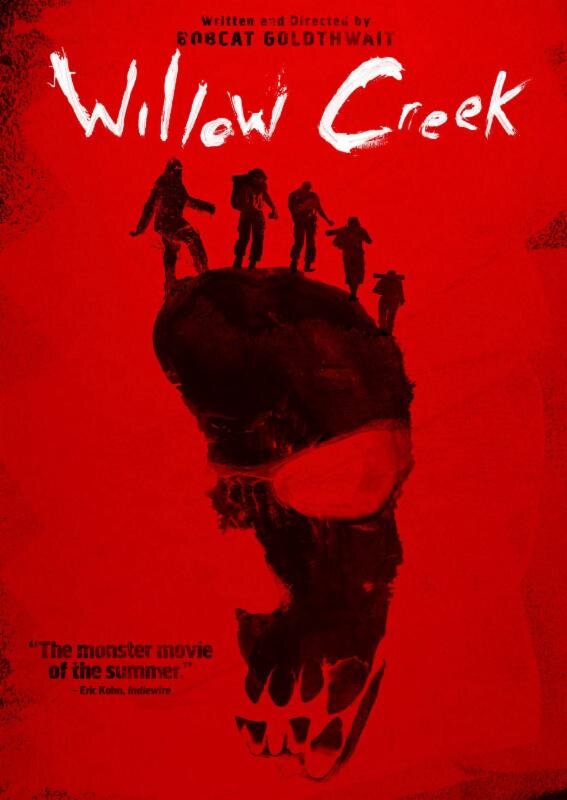
When Kelly (Alexie Gilmore) and Jim (Bryce Johnson) travel into Humboldt County, California on a camping trip to find the famous wildman, Bigfoot, their faith and will to survive are tested in equal measure.
If Willow Creek isn’t a tribute to The Blair Witch Project then it’s at least a loving nod. Effectively sparse and utilising tireless and detailed acting from what is effectively a cast of two, prolific writer/director/comedian Bobcat Goldthwait’s directorial foray into tense horror is a potent one. It shares Blair Witch’s theme and structure almost to a tee, other than replacing Myrick and Sánchez’ fictitious urban legend with one very much known in the real world.
Bigfoot, also referred to as Sasquatch in Canadian and American folklore, is an ape-like wildman of worldwide legend and innumerable alleged sightings. While all accounts of the Bigfoot are anecdotal, or highly disputable video footage or photographs, it manages to retain one of the highest cult followings of any urban legend, with followers deeply entrenched in the culture of searching out and worshipping the elusive ape-man.
Bigfoot has been a figurehead in popular culture for years, appearing on television, in films and countless pieces of merchandise. A few horror films such as Exists (2014) and Evidence (2012) have included the towering hair-covered phenomenon as an antagonist, though none quite so efficaciously as this one.
Ringu 1998 / The Ring 2002
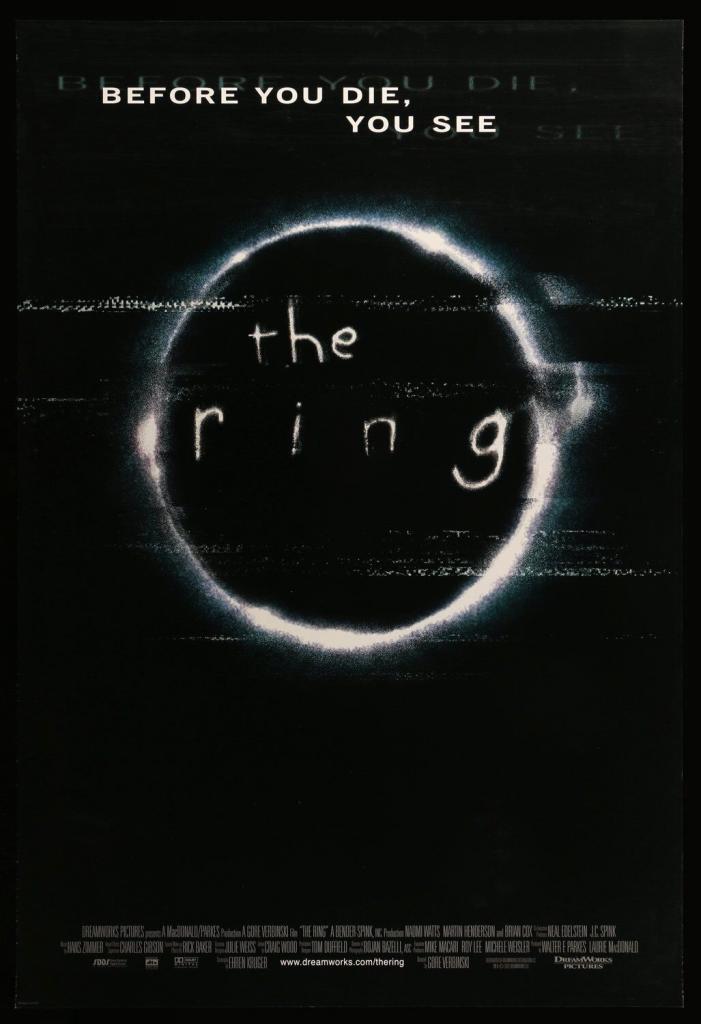
This Japanese frightfest and its American counterpart are a perfect example of a western adaptation done right. Japan has always had a distinct and dynamic take on horror as a genre, favouring dark spaces, pale ghosts with jet black hair and some truly unsettling signature sounds. One may think that a western attempt would completely miss the mark (or, as they tend to, miss the point completely) on such an unmistakable style, though Ringu’s remake The Ring proved to be as good if not a more accessible way to deliver its story to a wider audience.
When journalist Rachael (Naomi Watts) comes across a videotape that allegedly kills people seven days after watching, she must act quickly to decipher the meaning behind the object before it claims her own life. Featuring a solid performance from Naomi Watts along with a morbidly bleak atmosphere and some horrendously chilling imagery, The Ring managed to take an age-old Japanese urban legend and present it in a way certain to scare the worldwide masses. As if Ringu wasn’t unnerving enough.
The story itself is, as you may have guessed, based on an old Japanese legend dating as far back as the 12th century. Somewhere between 1333 and 1346 a fort now known as Himeji Castle was erected on Himeyama hill in western Japan. A samurai named Tessan Aoyama was said to have taken a particular fancy to a young servant of his named Okiku, so much of a fancy in fact that he vowed to take her away and marry her. When she refused his advances, the samurai hid one of the ten priceless golden plates Okiku was charged with looking after. He told her that if she did not agree to marry him he would openly blame her for the plate’s disappearance, an accusation that would undoubtedly lead to her being tortured and executed. In full knowledge of her predicament, Okiku was said to have committed suicide by throwing herself into a well in the castle grounds. Each night, so the tale goes, she would crawl back out of the well, appearing to Aoyama on a nightly basis until he went mad from her haunts. She was regularly heard counting the plates she had sworn to protect, throwing a destructive tantrum whenever she realised that number ten was still missing.
Ringu proves that a terrifying story does not have to be wholly original; sometimes a rework of an ancient tale will do just nicely.
Candyman 1992
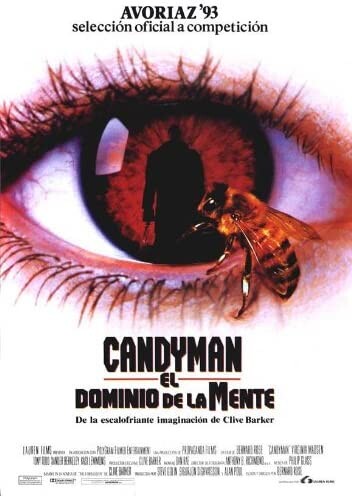
Candyman is the quintessential urban legend brought to life. Based on a 1985 Clive Barker short story entitled The Forbidden, the film shares a few similarities. The infamous Candyman, with his aura of bees and hook for a hand, will appear to anyone who either uses his name in vain or flat out refuses to believe in him. Say his name five times in a mirror (yep, that’s where that came from) and he’ll appear behind you, ready to drive his deadly hook into your tender form. That’s if you’re brave or stupid enough to even bother.
A graduate student named Helen comes across the Candyman legend while researching her thesis paper. Her examination into the insidious entity brings his attention right back on her, and soon she finds herself fighting for her life against an age-old evil that apparently only she didn’t know not to mess with.
Candyman has taken his share of inspiration from several sources, most notable of which being the Hookman legend. In the story, a young couple are getting steamy in a parked car when an emergency radio bulletin says that a mental patient with a hook for a hand has escaped the nearby asylum. The girl becomes terrified when she hears something scraping along the car, convincing the boy to drive off. When he does, neither of them notice the metal hook hanging from the door handle. While the similarities here are purely aesthetic, the Hookman appearance is unmistakable in any form.
The other clear inspiration for this 1992 classic is one of the many manifestations of the ‘say their name five times in a mirror’ dare, Bloody Mary. One of the most widely known tales to date, Bloody Mary is said to have been a witch who was burned for practicing black magic, though more modern retellings say that she was a young woman who died in a car crash. Every kid’s first sleepover isn’t complete without a game of Bloody Mary, making her one of the first spirits many of us will have encountered.
Links
https://en.wikipedia.org/wiki/List_of_Bermuda_Triangle_incidents
https://www.imdb.com/title/tt1187064/
https://www.imdb.com/title/tt0185937/?ref_=nv_sr_srsg_0
https://www.thrillist.com/entertainment/nation/blair-witch-project-true-story-burkittsville-maryland
https://www.mirror.co.uk/film/blair-witch-real-truth-behind-8844017
https://www.vice.com/en/article/8xzy4p/blair-witch-project-oral-history-20th-anniversary
https://en.wikipedia.org/wiki/Himeji_Castle
https://screenrant.com/candyman-movie-real-urban-legends-inspiration-tony-todd/
https://www.popsugar.co.uk/entertainment/where-does-candyman-legend-come-from-47313482
Joe first knew he wanted to write in year six after plaguing his teacher’s dreams with a harrowing story of World War prisoners and an insidious ‘book of the dead’. Clearly infatuated with horror, and wearing his influences on his sleeve, he dabbled in some smaller pieces before starting work on his condensed sci-fi epic, System Reset in 2013.Once this was published he began work on many smaller horror stories and poems in bid to harness and connect with his own fears and passions and build on his craft.
Joe is obsessed with atmosphere and aesthetic, big concepts and even bigger senses of scale, feeding on cosmic horror of the deep sea and vastness of space and the emotions these can invoke. His main fixes within the dark arts include horror films, extreme metal music and the bleakest of poetry and science fiction literature.
He holds a deep respect for plot, creative flow and the context of art, and hopes to forge deeper connections between them around filmmakers dabbling in the dark and macabre.

